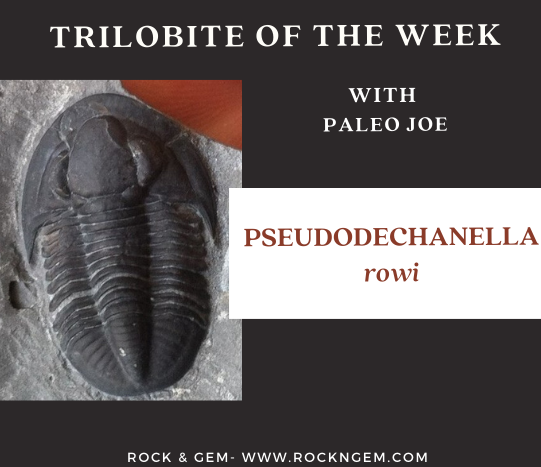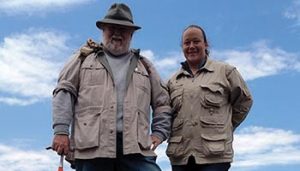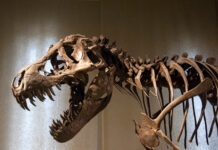
By Joseph “PaleoJoe” Kchodl
Presented here is PSEUDODECHANELLA rowi, a beautiful and deep black-colored trilobite from the Devonian Period of New York. This stout trilobite has a very inflated and semi-circular head section. With very large crescent-shaped eyes, its vision should have been nearly 360 degrees around.
The cephalon has short and thick genal spines. It has a large pygidium or tail section that makes this species easy to identify. The thorax contains between 12 and 14 segments.
Found in the Centerfield Limestone near Batavia, New York, this PSEUDODECHANELLA rowi is a prized find.
DID YOU KNOW: Trilobites, an extinct form of arthropod related to insects, crabs, crayfish, and horseshoe crabs, are among the most prevalent invertebrates with hard body parts to appear during the Cambrian Period. These creatures are called trilobite due to the three distinct “lobes” running vertically through the body section.

About the columnist: Joseph “PaleoJoe” Kchodl is a paleontologist, educator, veteran, author, fossil dig organizer/guide, business owner, husband, father, and grandfather, and fossil fanatic. For decades, he’s spent hours in classrooms around the Midwestern United States and beyond, speaking to school children about fossils and fossil hunting. Visit his site to purchase fossils, contact PaleoJoe, visit www.paleojoe.com.
Plus, learn more about PaleoJoe and his daughter PaleoJen and their paleontology exploration partnership in an the article “Fueling a Passion for Paleontology“.
If you enjoyed what you’ve read here we invite you to consider signing up for the FREE Rock & Gem weekly newsletter. Learn more>>>
In addition, we invite you to consider subscribing to Rock & Gem magazine. The cost for a one-year U.S. subscription (12 issues) is $29.95. Learn more >>>















